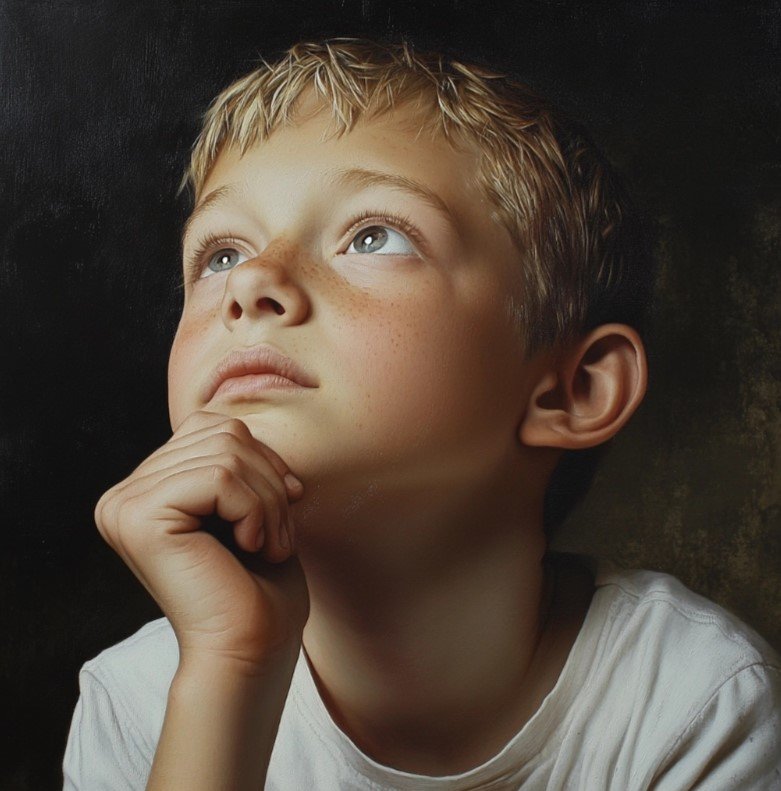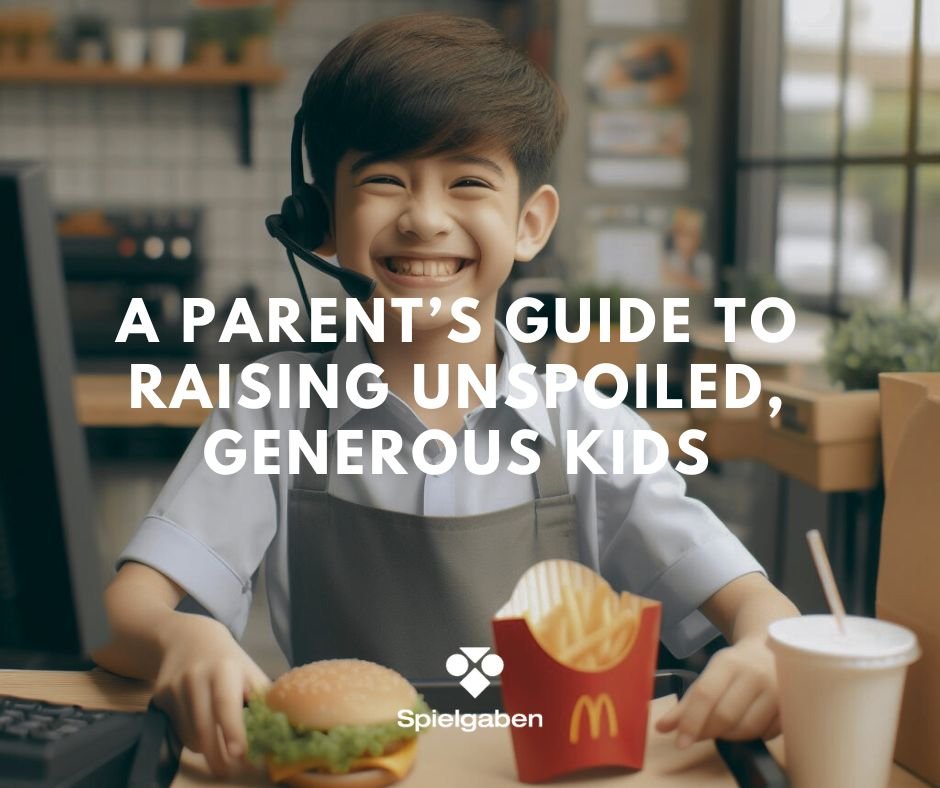Explode Your Child’s Imagination Through Stories
Play enlivens fantasy, and fantasy kindles and diversifies play. As the child becomes older, this creative imagination develops into the formation of images. This same ability later transforms into creative thinking.
Developmental psychologists have confirmed “the development of imagery in the thinking processes of children is an important part of child development, related to play patterns, to creativity, and to adult achievements.
The faculty of imagination develops simultaneously as memory develops. In the third year, the child begins to develop memory and ideas through the separation of himself from the world in consciousness.
The child is able to unite his increasingly conscious self with the world through his will in play, and fantasy soon follows.
You can nourish the development of your child’s imagination by providing nourishing images from stories the child hears and limiting images the child receives from television, computer games, videos and movies.
Differences between Auditory and Visual Images and which one is more important for your child?
Images a child hears actively engage his own imaginative or picture-making processes. A good storyteller knows that she is weaving a cloak of magic around the listeners as she describes the characters and the unfolding action. Once we overheard elementary school children say to his/her friend, “I like to read books without pictures best, because then I can picture them any way I want to.” Perhaps this is one of the reasons why movie renditions of books we have read are never quite as satisfying as the originals.
Images we make of things we have read or heard are easy to transform in our imaginations or daydreams because we have already given them life by creating them with our mind’s eye.
Images we see, however, have a tremendous sticking power and are very difficult to change because they come to us already completed. Who can think of the Seven Dwarves without seeing Happy, Sleepy, Doc, and the entire retinue as Disney portrayed them?
We were surprised when older children talked to each other about cartoons they had seen five years earlier. And, we realised that we as adults could still call up images from television programs we had seen when we were little.
Television and movies don’t have as strong an effect on adults as they do on children. Not only do images from television and the movies make a deep impression on the young child, who is all sense organ, but their power also means that these images will be repeated in play as the child tries to digest and assimilate what he has taken in. Even an older child (and many an adult!) will continually talk about a movie right after having seen it in an attempt to digest it.
Because the images from television and the movies are so powerful and change so quickly, children often do not understand the storyline and are left imitating the rapid movements and the other elements that make the strongest impression: chasing, shooting, crashing, and so on.
Also, because children are kept passive while watching television, they have all the more need to race about when they are finished. Young children’s natural state is movement.
Images from television always reminded us of those automatic reflex responses that bypass the brain, like pulling back your finger from a hot stove before realizing what has happened. In a similar way, images from television and the movies seem to bypass the child himself and come out in frenzied movement, without the child having transformed them into his own unfolding story.
We often observed a dramatic difference in the quality of play of children who did not watch television. Their inside play was much more imaginative and more likely to run around and attempt to catch one another.
Some parents are afraid that if they don’t let their children watch television they will be seen as social misfits. On the contrary, they are often welcomed because the child will be more creative.
Children who do not watch television will still play games with their friends involving TV or movie characters, whose nature they can easily pick up from the plastic figures. But when everyone was playing characters from Star Wars, for example, the internal process of play was very different in the child who had not seen the film. The imagination was more active and original in the child who was not relating to the fixed visual images from the screen.
The importance of Oral language and Storytelling
In his book A Is for Ox, Professor Barry Sanders develops the thesis that true literacy, and the ability to reflect upon one’s self and one’s actions, which it encourages, can only be based upon a firm foundation of oral language. His book provides a fascinating and cogent argument why, as he states, “The teaching of literacy has to be founded in a curriculum of song, dance, play, and joking, coupled with improvisation and recitation.
Students need to hear stories, either made up by the teacher or read out loud. They need to make them up themselves or try to retell them in their own words. Teachers need to provide continual instruction in the oral arts – from primary school, through the upper grades, and on into college.” He also shows that this continuing emphasis on the spoken word in schools needs to be built upon the oral foundation provided by the parents in the home, through conversation, singing, nursery rhymes, and stories.
It is significant that Sanders mentions lullabies and nursery rhymes, which are valuable for the rhythmical qualities of language in which they bathe the child.
To encourage the transition from nursery rhymes to stories, parents are always encouraged to read to their children, so the children will be exposed to books and to reading. Having parents who read and older siblings who have successfully learned to read increase a child’s eagerness to do the same.
However, there is also a great deal of value in telling stories to your children. Not only do the children gain listening skills, but they also appreciate the fact that you are doing something creative with them.
When you tell a story, you weave a magic web in which the listeners become engrossed, and there is nothing between you and the children to distract your attention or theirs. By telling a story rather than reading it, you are also free to note the effect the story might be having on the child.
With two and barely three-year-olds, your stories can be simple descriptions of the world that your child experiences.
Telling simple stories from everyday life in a slow, deliberate way with a musical tone of voice will delight a two-year-old. A lot of what your two-year-old appreciates is the special time with you and the soothing quality of your voice, which can bring up images or create a mood of security or fun with its rhythms and rhymes.
Children who are three years and older love to hear stories from your own childhood. “When I was a little girl my mother worked at an live cannery where they had great big barrels where the olives floated in salty water to make them taste good to eat. And there among the barrels my mother found a little grey kitten…. When, what do you think we named her?” These stories, which have their basis in your experiences, can also stimulate your imagination, so that you start telling a whole made-up series of stories about the adventures of the kitten named Olive. Imagination isn’t just for kids!
In stories for young children, although animals might be personified (like Mrs. Duck), it is best if they are still true to their natures and their lives in the natural world that the child is coming to know and love. Cartoon characters represent an adult level of sophistication that goes beyond the world of early childhood.
Children also love to hear stories about themselves, especially about when they were babies (now that they are so grown up!). They like to hear about things they said and did, the time they went to grandma’s house, and so on.
When is your child old enough for stories? Obviously it takes a certain maturity of language development for a child to listen to a story. Until that time children are still totally immersed in experiencing things themselves. Take your cues from your child and start with very short stories, as described above, gradually working up to longer ones with repetition, and then into simple fairy tales.
Sharing Stories with Young Children
First, it is important that you be comfortable with a story and at least open to and appreciative of its deeper meaning.
If a particular story pushes your buttons, don’t share that one with your children. Rather, choose a fairy tale that peaks to you, one you can meditate on and try to penetrate to its mood and inner meanings.
You can become familiar with various approaches to the interpretation of story by reading some of the books listed at the end of this chapter, but ultimately you will need to let the story speaks to you directly. Try reading it to yourself every night before you go to bed. By taking it into your sleep, you will gradually gain insight into it.
One way to match story to the age of the child is to look at a story’s degree of complexity. In almost every fairy tale and story there is either a problem that must be solved or a confrontation with evil. The milder the problem, the more appropriate the tale for younger children. Conversely, the greater the evil, the more appropriate the tale is for older children.
When stories and fairy tales are translated into cartoons or movies, they lose their evocative quality and are often too powerful or too inane for young children. However, when stories are presented to children in a natural and illustrating way with a little creation using hands on materials and manipulatives that are available in your house can be totally delightful and further enhance their creativity and imagination.
So… Go on… Share stories that you care and like and play with your children. You will be surprised to see explosion of your children’s imagination in no time that will definitely further enhance their creativity.













Comment (1)
[…] sets bounce houses apart is their ability to capture the imaginations of children while also promoting physical activity. In today’s digital age, where screens often dominate […]